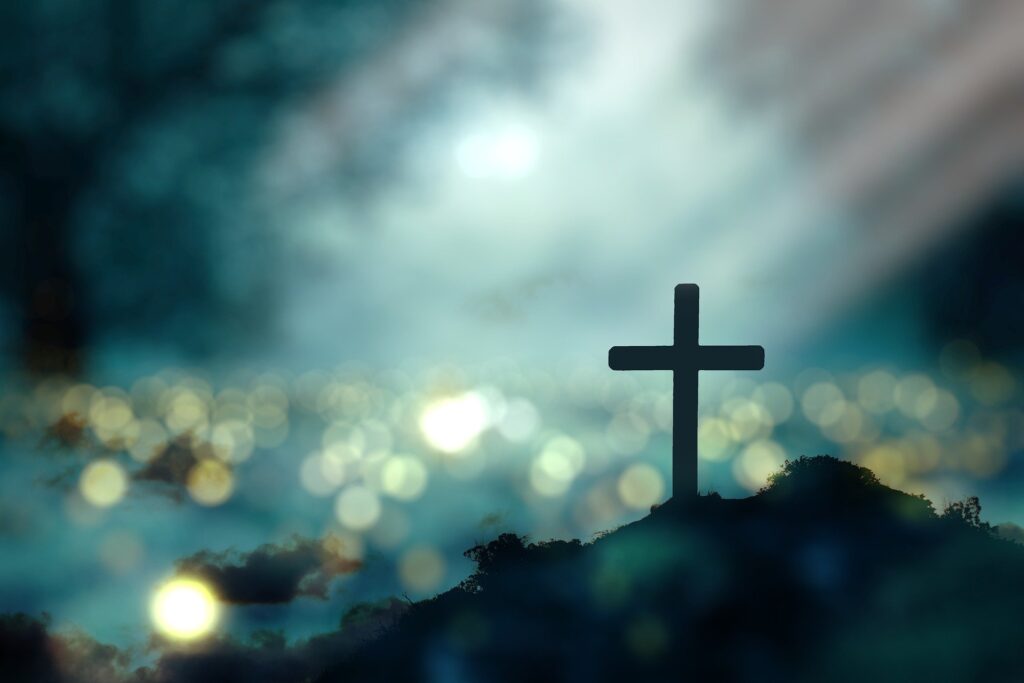I have a vivid childhood memory of hearing my mother read C.S. Lewis’s book, The Lion, the Witch and the Wardrobe. Chapters 14 and 15 tell the story of the battle between life and death: the horrific killing of the hero, Aslan, the grieving of his faithful friends, and his triumphant emerging into life once again. Raised also on Bible stories, this young child saw the parallels between the ropes that bound Aslan and the cross that held the hero Jesus captive. I saw a connection between the broken Stone Table and the empty tomb. With life restored, mourning turned to rejoicing.
There is a lot I don’t understand about the Christ’s resurrection. Lacking scientific or theological language to explain the resurrection, at Eastertime I often just cling to the stories: the grieving of Jesus’ followers approaching the tomb, the disciples racing to the burial site and spotting only burial cloths inside. An angel’s announcement and the “gardener” who utters a distraught mourner’s name.
This old-yet-new story comes to us every year and we recognize its power: out of betrayal, suffering and death came the surprise of new life. Sad news turned into good news. Mourning became rejoicing. Discouragement led to energy for new steps of faith.
Somehow the entire history of God’s people hangs on that first Easter day. Where would we be if the garden tomb had remained occupied?
In 1 Corinthians 15 the Apostle Paul invited the early Christians to trust that death-to-life story told every Easter. Surviving through persecution and prison, he had staked his life on the truthfulness of the empty tomb.
To Christ-followers living in uncertain times, he wrote, “If there’s no resurrection, there’s no living Christ. And face it—if there’s no resurrection for Christ, everything we’ve told you is smoke and mirrors, and everything you’ve staked your life on is smoke and mirrors. Not only that, but we would be guilty of telling a string of barefaced lies about God. . . . And if Christ weren’t raised, then all you’re doing is wandering about in the dark, as lost as ever. . . . If all we get out of Christ is a little inspiration for a few short years, we’re a pretty sorry lot” (1 Cor. 15:14-20, The Message).
What does the resurrection mean for you and me today, in our individual lives and in our faith communities?
In the dark times of Good Friday, we witness the forces of destruction at work: illness in our bodies and in the bodies of the ones we love, conflict close at hand and raging wars across the world. Greed and selfishness seem to win over justice, and strong forces threaten to destroy the planet we love.
And yet the power of Easter calls to us. In our Easter feature, preacher Mark Diller Harder invites us to a “deep hope,” with a reminder that—in the final chapters—death will eventually see defeat. The resurrection of Jesus foreshadows where God’s story will ultimately lead: a place of joy and restoration.
In the meantime, we cling to signs of new life and accept them as Easter gifts. Living in the northern hemisphere, we experience spring as a kind of resurrection, with signs of new growth after a long winter. We hear stories that inspire hope: of human kindness, of relationships restored, of courageous stands for justice, of gifts shared and multiplied. And we gain strength to take new steps of faith.
Following the living Christ, Paul concluded, “With all this going for us, my dear, dear friends, stand your ground. And don’t hold back. Throw yourselves into the work of the Master, confident that nothing you do for him is a waste of time or effort.”
May we trust that ancient Easter story and live into its reality here, today. The risen Christ beckons us to turn our backs on the tomb and leave the burial cloths behind. By his side, and trusting the Author of that Story, we walk together toward new life.
New correspondent
 In this issue you will see a new byline—of Jessica Evans, the new Alberta correspondent. We welcome her to the Canadian Mennonite team and look forward to sharing her work in the magazine.
In this issue you will see a new byline—of Jessica Evans, the new Alberta correspondent. We welcome her to the Canadian Mennonite team and look forward to sharing her work in the magazine.
Jessica grew up attending Springridge Mennonite Church in Pincher Creek, Alta., and graduated from Canadian Mennonite University. She has writing and photography experience working for non-profit organizations, newspapers and magazines. Feel free to send her your ideas for news stories in the Alberta Mennonite community. Her email address is ab@canadianmennonite.org.
Read more editorials:
‘For the joy of ear and eye’
Two years in
Learning to listen
Citizens of a city on a hill
Thanks to you









Leave a Reply
You must be logged in to post a comment.